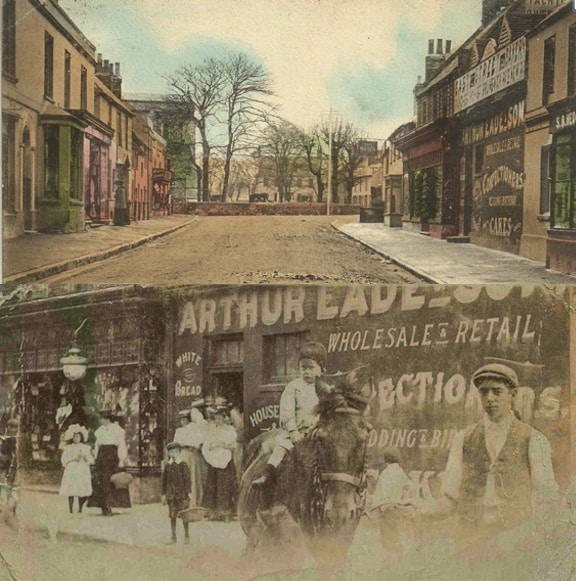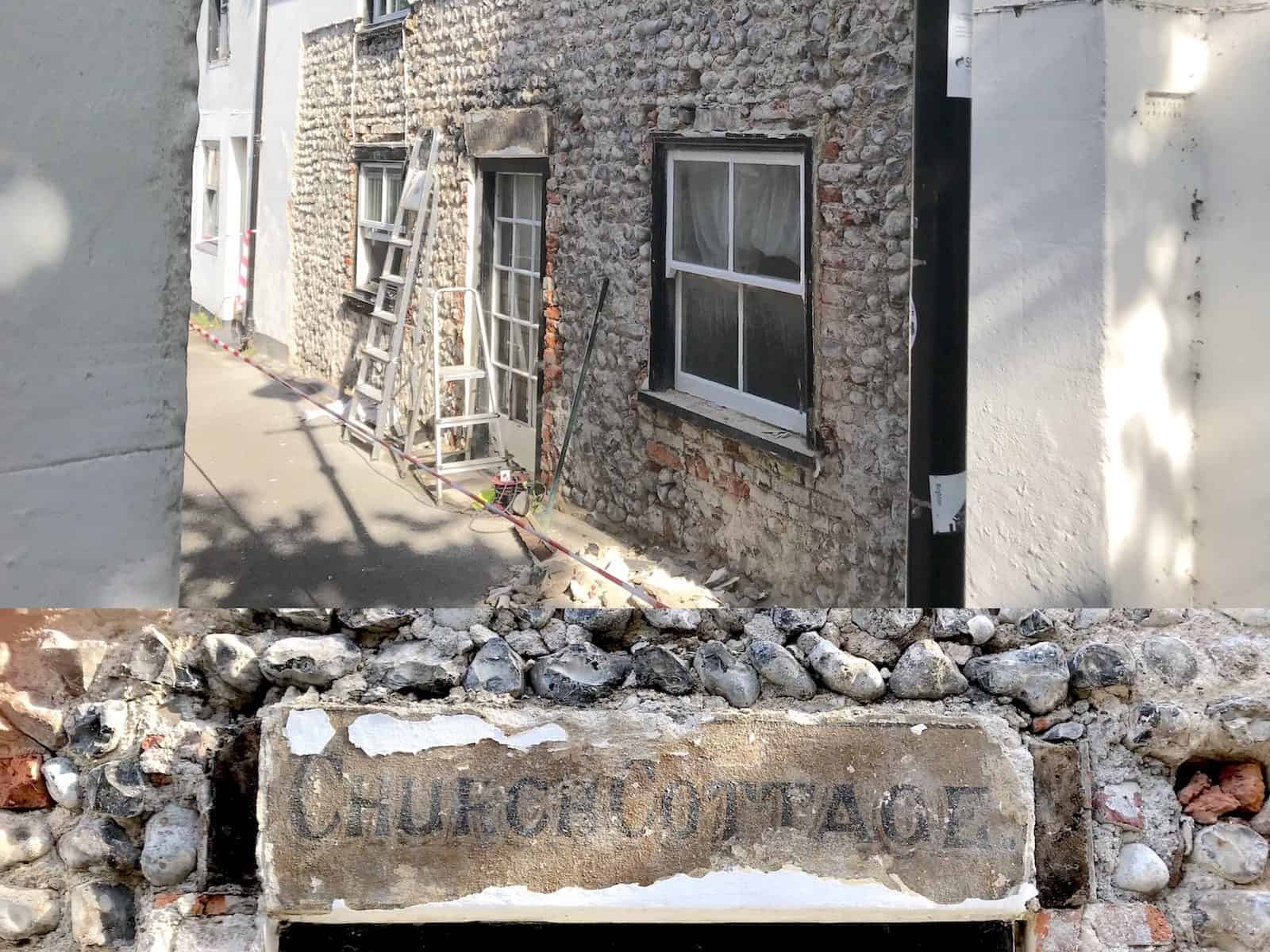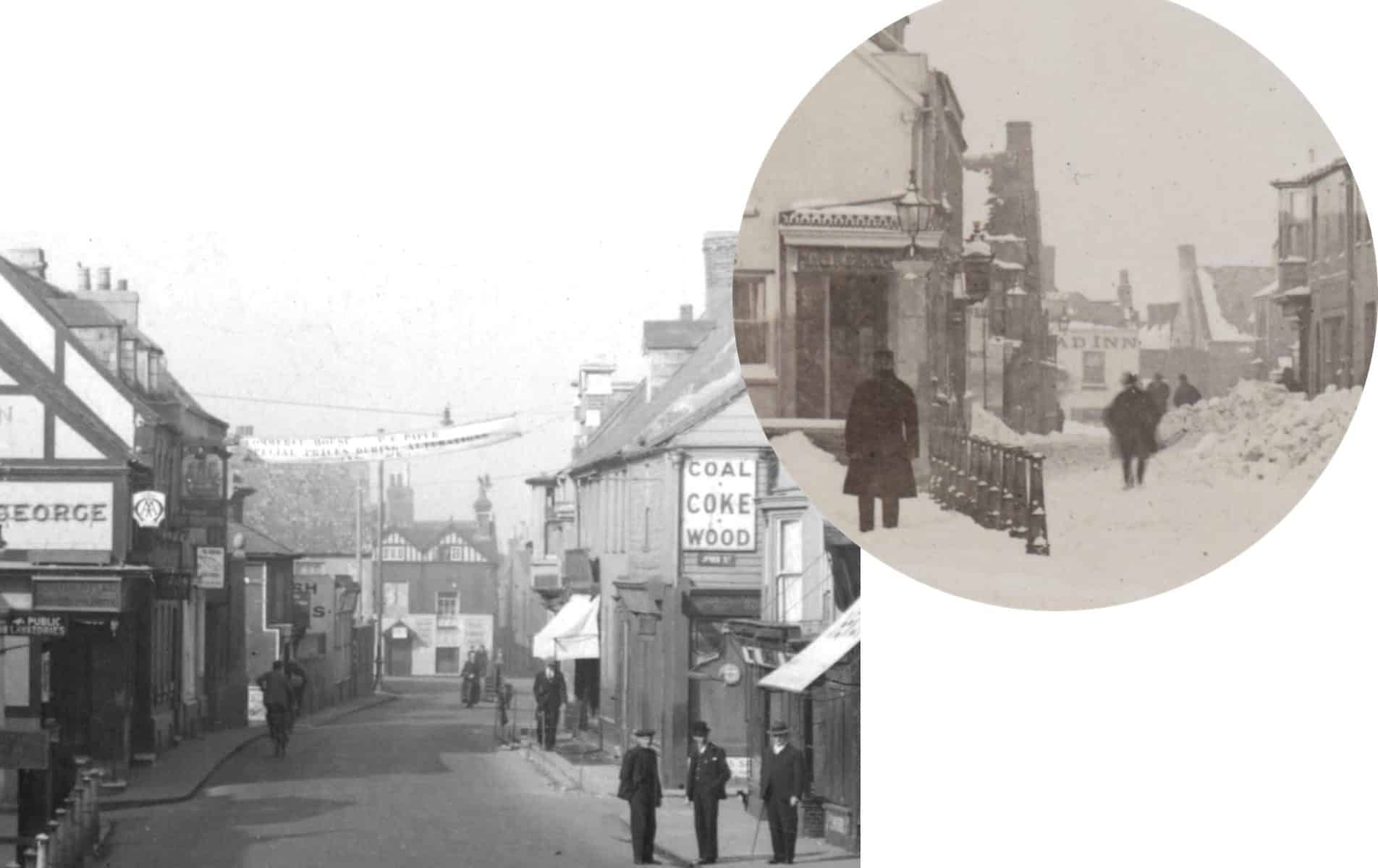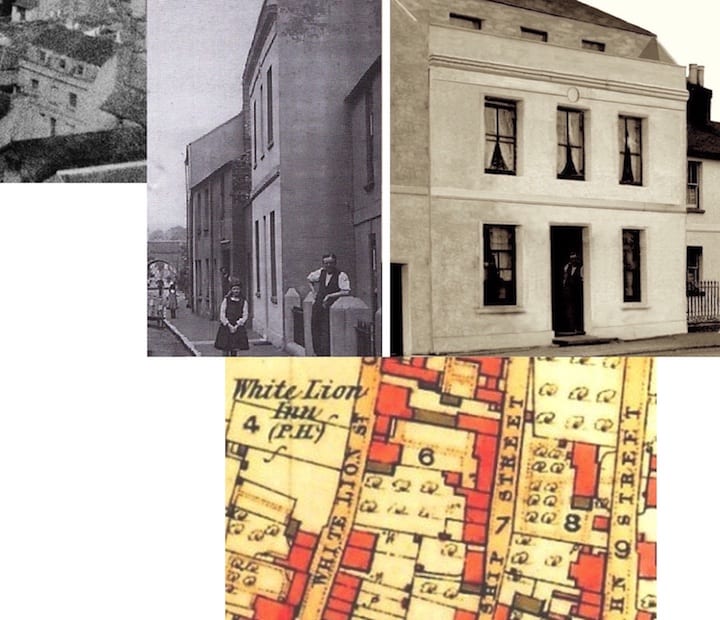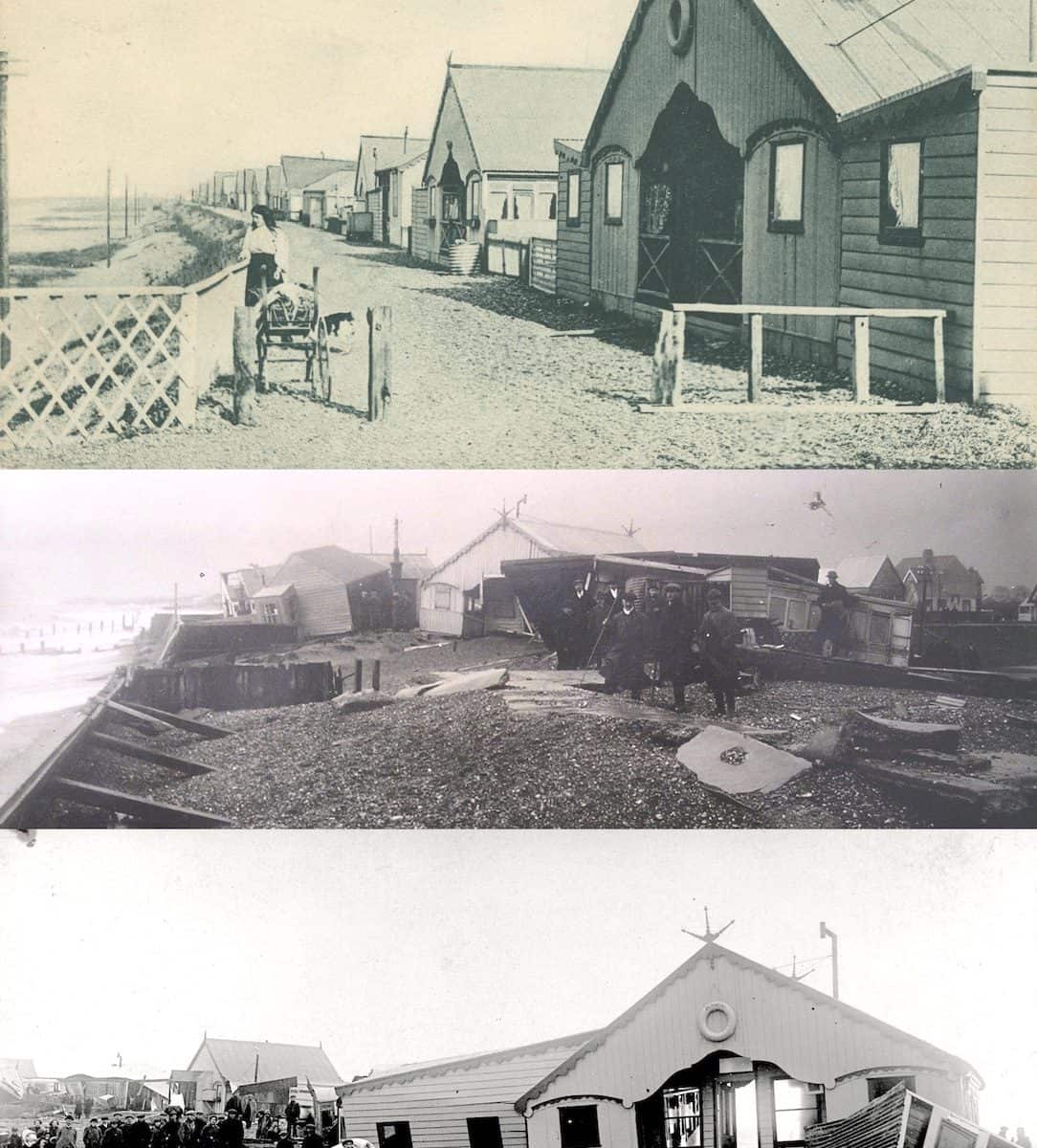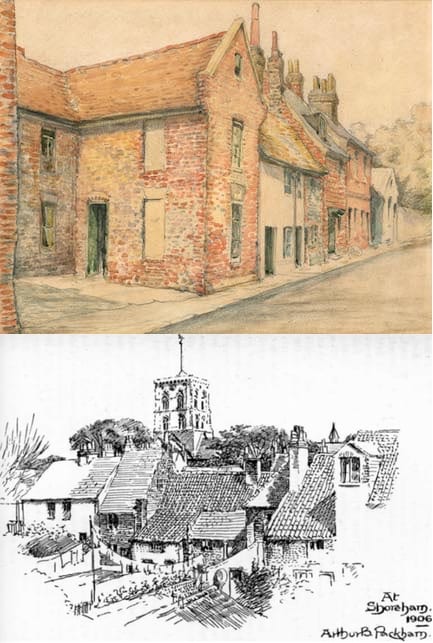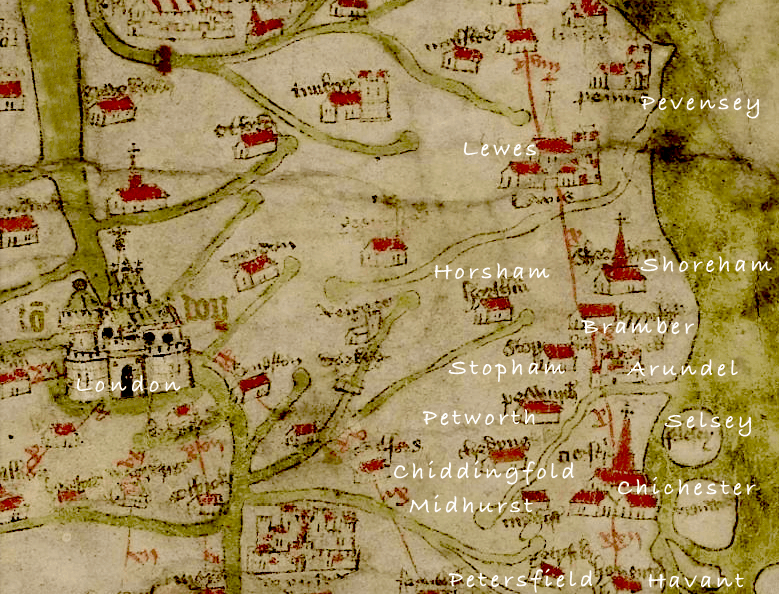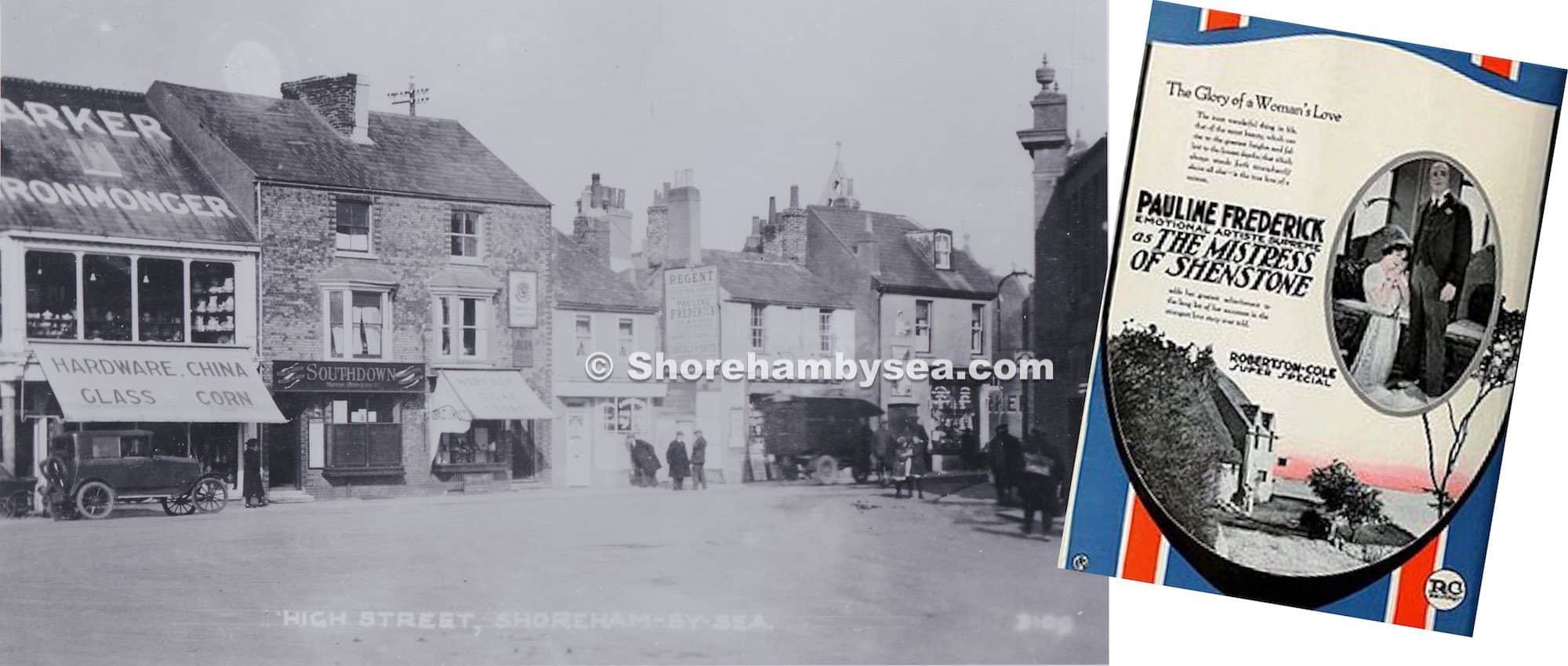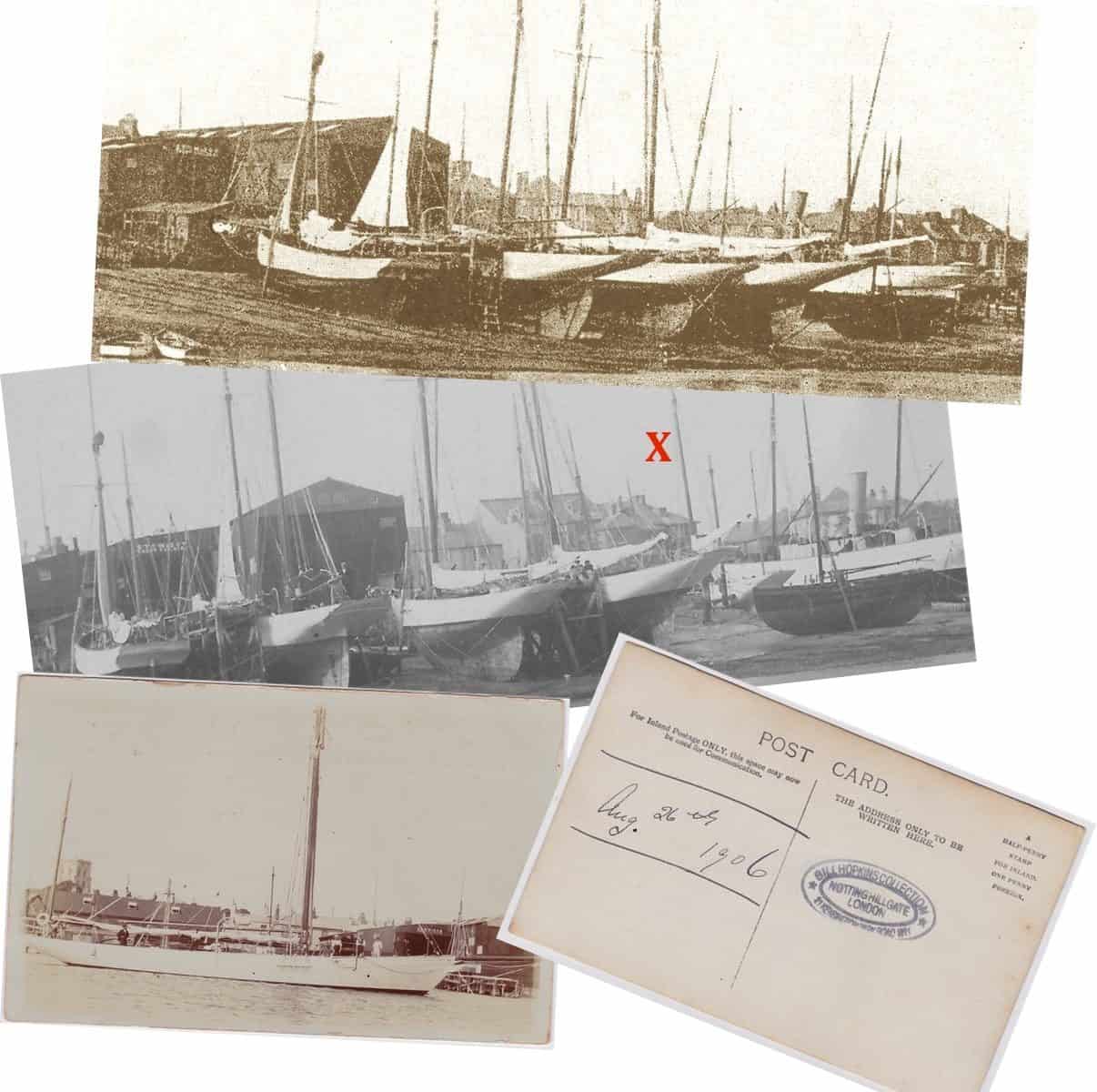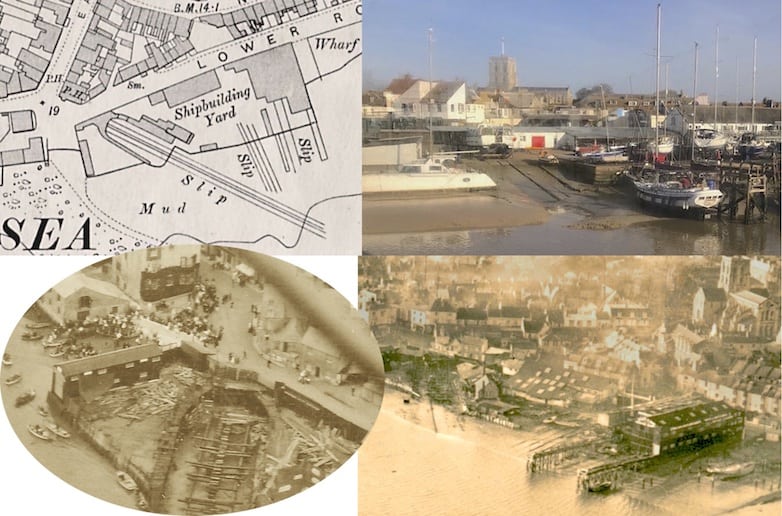A somewhat different East Street circa 1900 with Eade’s Store where Toast by the Coast is now and next door George Hedgecock’s shoe shop (nowTeddy’s).
Lower photo from the Hedgecock Collection on this website
Swan Inn, Church Cottage in the twitten
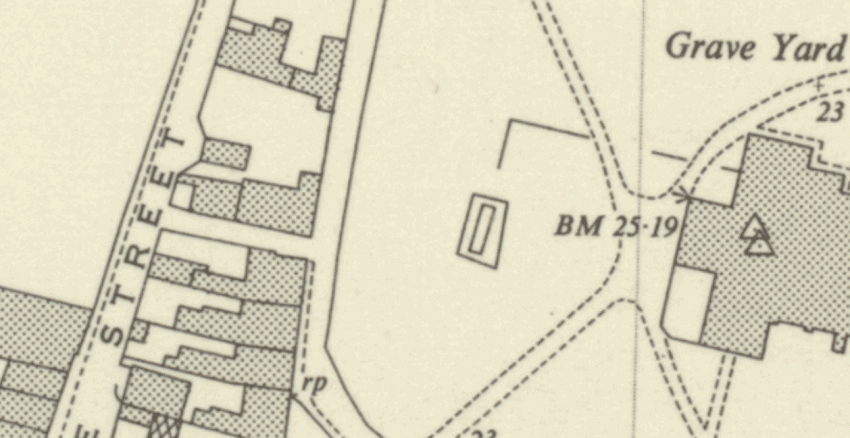
How many of Shoreham’s old houses used to look – it’s previous use as an inn is alluded to in the 1782 Survey where it is noted as the ‘sign of the swan.’ At some time in its life it also seems to have been named ‘Church Cottage.’ The first time that name appears at the twitten addresses is in 1890 when both the house and the small westerly extension were shown as ‘Church Cottages’ but not in the singular until 1917.
Congratulations to the owners for revealing this lovely old sign!
King’s Head – High Street
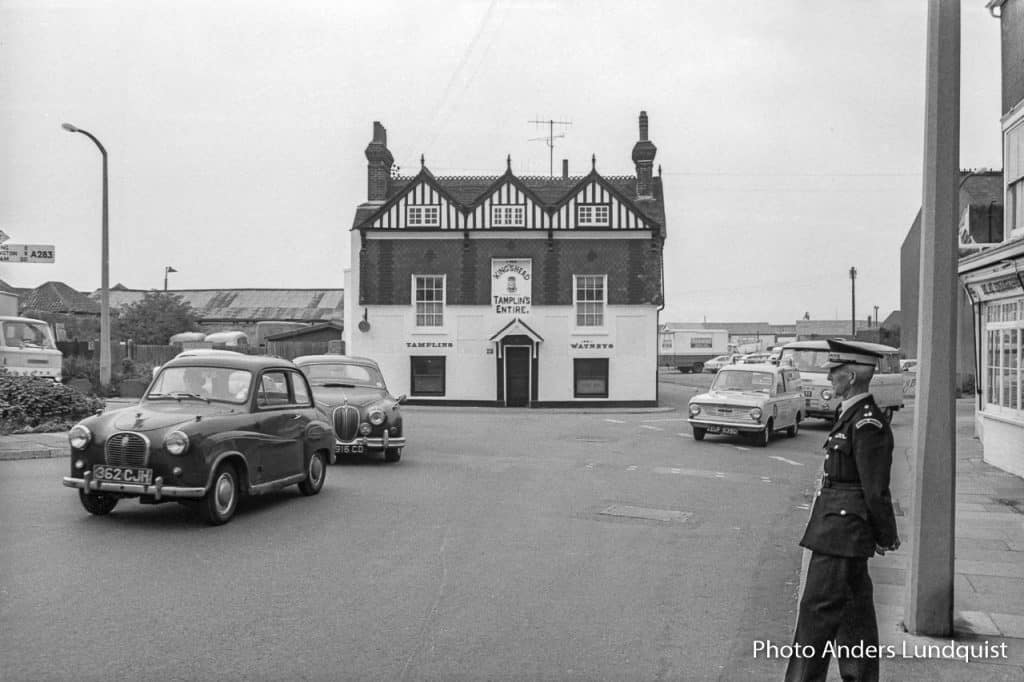
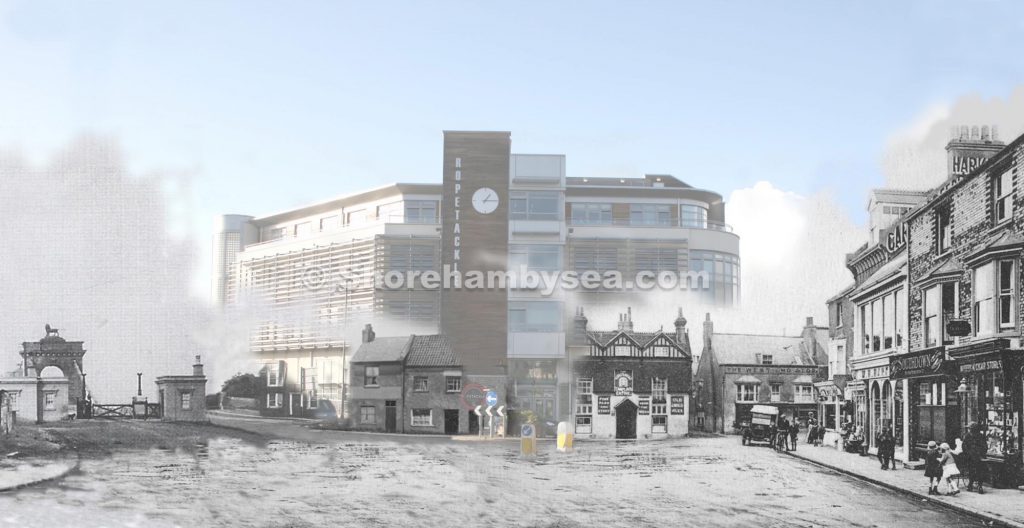
White Lion Inn
Often missed on the 1872 map is the name ‘White Lion Street’ in the place of West Street. It was renamed as such, for a short while at least, due to the influence of the landlord of the White Lion Inn. We only have a vague aerial shot and an acute angle view of the Inn but this computerised reproduction gives more of an idea of how it looked.
Dilkusha bungalow and storm damage 1913
Continual searches through our collections over the years do lead to some images sticking in the memory and these are three of them. At the top is the well known postcard of Dilkusha bungalow and below it a view from the beach-side of the storm damage (1913 I think) to it and its neighbours, then another from the Widewater side.
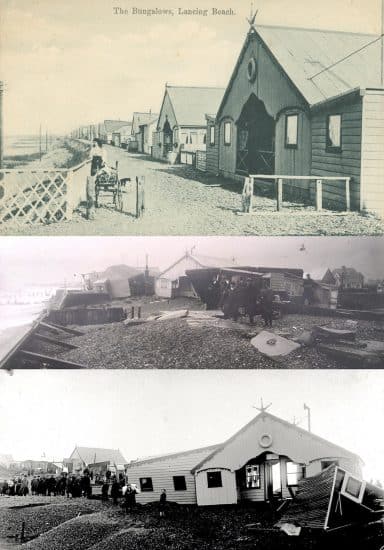
History under a car park
A little known story is about the demolition of the lovely old cottages in Middle Street that were replaced by today’s car park. Why just those in between other similar cottages in the street? It seems the whole row were considered then to be unfit for human habitation and, true or not, one of the criteria was said to be a lack of natural light (which of course many old buildings do suffer from). During the inspection of those in Middle Street the council official responsible for approving the demolishing had reached the cottages beyond today’s car park and, when asked if she needed the light on to be able to see, replied she could see perfectly well. In doing so she could not then condemn it and that, I am told, is why the rest survived.
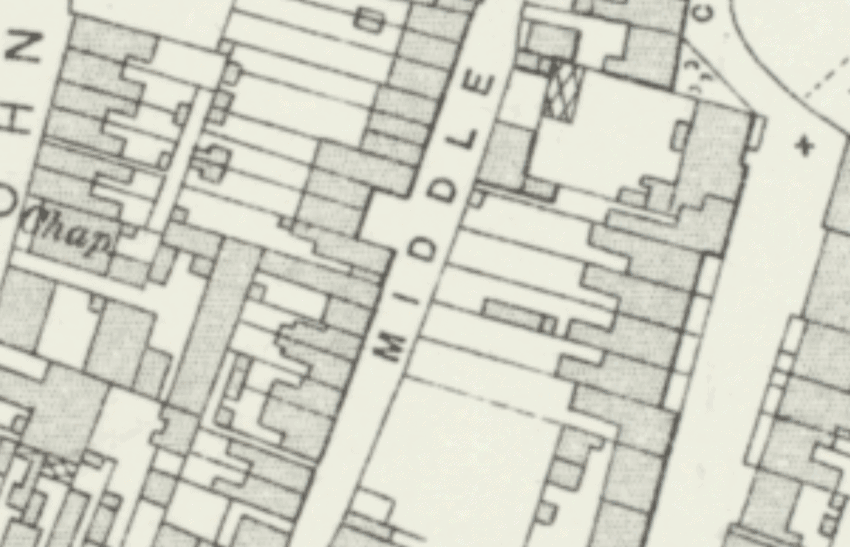
Map from 1360
I’m fascinated by mediaeval history particularly concerning our area. Don’t know how long this resource has been on line but it provides a revealing glimpse of the places in c.1360 considered then to be more important. I’ve added the present day names and surprisingly (for me) it includes places like Stopham and Chiddingfold – Selsey at that time was an island! Shoreham is portrayed as quite a dominant town which of course it was then due to its shipbuilding industry but strangely the River Adur is not included. What it lacks in detail and proportion it makes up for by magically taking us back to a Tolkein-like middle earth seven hundred years ago (see the complete map shape of the British Isles) – an amazing feat for those times.
Well worth a visit – http://www.goughmap.org/map/
Details hidden in photographs
Dating photos can often be difficult but sometimes there’s a clue that makes it easy. This photo of the High Street has a poster for a film on the side of one of the buildings that was released in 1921.
(enlargement and increased contrast of the poster since added to make it all readable)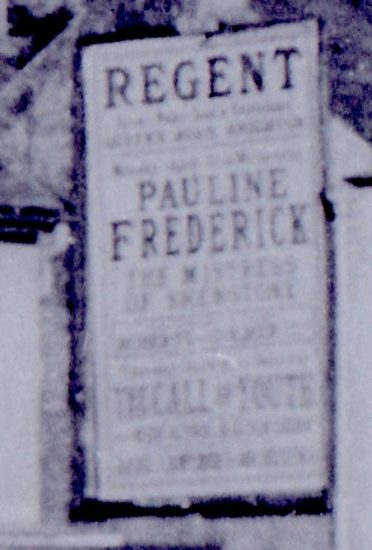
Dating photos
The two photos of Stow & Sons yacht-building sheds were almost certainly taken within a short time and distance of each other. There are a number of clues including the same yachts moored in front of the sheds but most significantly of all is the man working on one of the masts.
The large yacht below has been identified as the Rosalind built in 1904 by Stow but there is a date 26th August 1906 written in ink on the reverse. Built for owner Charles Hellyer and registered at Hull it voyaged widely but, significantly, Lloyds Yacht Registers record it returning to Shoreham for the vessel’s annual survey in 1906 and is likely to be the date of that photo.
Of all the photos we have of Stow yachts it is only the Rosalind that has a cranked, forward leaning mizzen mast so close to the stern. Amongst the vessels in the other photos the fourth yacht from the left also has a cranked mizzen mast (marked X) in a similar position and therefore more likely to be the Rosalind and of a similar date.
Old slipways
Until recently as you walked back to the town over the footbridge you could see the rails of a slipway in the grounds of the Sussex Yacht Club. Were these the remains of the 19th century rails in the last of Shoreham’s shipyards? It doesn’t seem so. Maps show the original rails in Dyer’s Yard to have been at more of an acute angle to the riverside than the ones In the modern photo. The others to the right, also 19th century, were installed nearer to the time when the yachtbuilder Stow & Son ran the yard.



